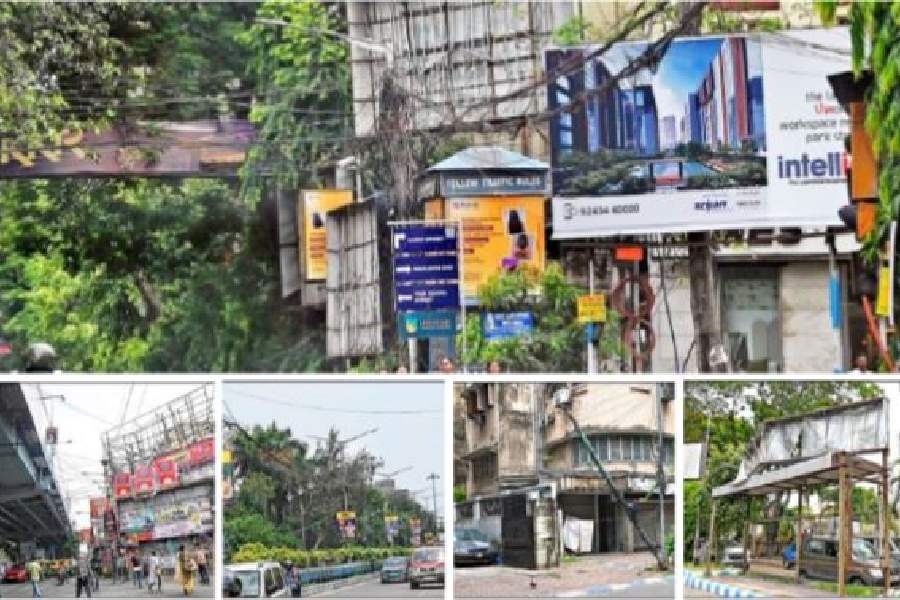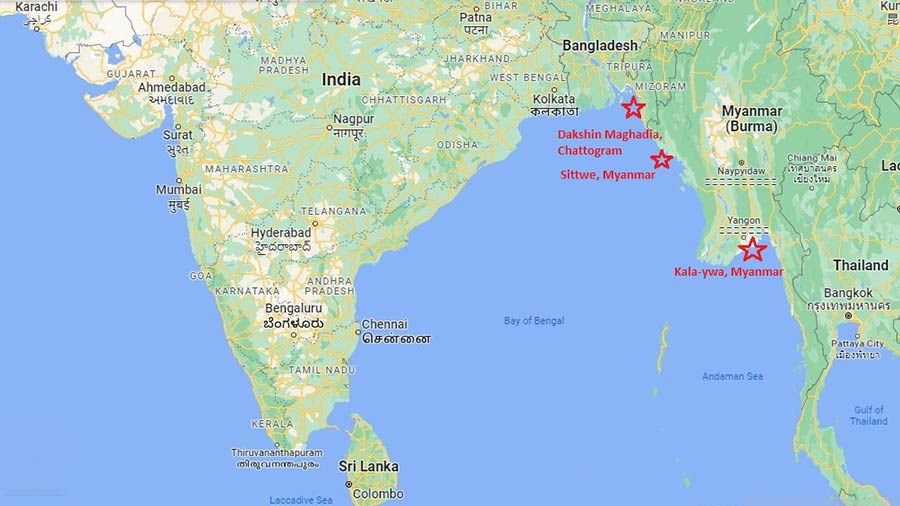In the three years since Cyclone Amphan devastated Kolkata, the city does not seem to have learnt its lessons.
The Met department has warned that another cyclone is likely to form over the Bay of Bengal next week — to be called Mocha.
If it does strike Kolkata, the city has enough of what could trigger disasters — cables hanging dangerously, old and wrongly pruned trees bending precariously on roads and giant, rusty billboard frames standing menacingly atop buildings.
After Amphan barrelled through the city at 114kmph on May 20, 2020, the authorities had promised change. A drive-through on Friday suggested they have not delivered on their promise.
The weather office said on Friday that a cyclonic circulation, the precursor to a cyclone, is likely to take shape over the southeast Bay of Bengal on Saturday. The system is tipped to intensify into a low-pressure area on Sunday, a depression on Monday and a cyclone on Tuesday, according to the Met forecast.
By the time it turns into a cyclone, the system is expected to be over the central Bay of Bengal. There is a good possibility that the storm will keep gaining in strength after becoming a cyclone.
The possible path of the cyclone will emerge only after the low-pressure area takes shape, said a Met official. For now, the possible target ranges from Odisha to Myanmar.
It is always better to act before disaster strikes.
Cables
Bunches of unwieldy cables run above almost all streets in Kolkata. The civic authorities had said in 2020 that many of the trees and street lights that were uprooted during Amphan fell under the weight of cables.
On Friday, many roadside poles from Beleghata to Kasba had multiple rolls of cables tied to them. Together, they would weigh several kilograms.
“We have removed many defunct cables. In the next few days we will try to remove more cables,” said Sandip Bakshi, mayoral council member in charge of the Kolkata Municipal Corporation’s lighting department.
Hoardings
Rickety and rusted frames for display advertisements stand on footpaths in many places. The edges have rusted and portions of the frames have come off. Their look does not inspire the confidence that they can survive a 100kmph storm.
Such frames are there along Shakespeare Sarani, at the bus stop outside Acropolis Mall in Kasba, at the Deshapriya Park crossing and in Moulali, among other places. Many such frames had collapsed during storms in the past.
Civic sources said there is hardly any maintenance of these structures. The advertising agencies that own the rights to display advertisements there are supposed to maintain them.
The ones atop private buildings look even more ominous. The authorities have said that since they are on private properties, they could do little to check their stability.
Tree pruning
A walk down any pavement of Kolkata would reveal that the trees rising from it have very little soil around their base. The footpath, right up to the tree, has been paved with paver blocks or concrete.
Though this has been known for years, the civic body has not removed the concrete from near the base of the trees.
“This leaves very little scope for surface roots to grow. The surface roots help the tree stand erect against strong winds,” said a naturalist.
Unscientific pruning — the portion that is accessible is pruned and the other side is left untouched — distorts the balance of trees, making them prone to fall.
Extreme weather
Extreme weather events will become more common with time, said Harjeet Singh, head of global political strategy at the Climate Action Network, a network of civil society organisations across 130 countries fighting the climate crisis.
Amphan came in May 2020 and was followed by Yaas in May 2021. “Identify the risks well in advance based on past instances,” he said.
Singh said glass windows, which are increasingly being used in new buildings, are a threat during cyclones.
Tin shades, used in informal settlements, can also injure humans during a storm. Experts said cities have to invest in measures that can prevent or minimise damage during a storm. Given that most reports have now highlighted the impacts of climate change, there is enough time to make the preparations, they said.

